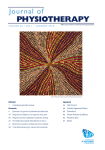Journal of Physiotherapy
The Short Physical Performance Battery (SPPB) test is designed to measure functional status and physical performance. It was first described in 1994.1 It is a composite measure assessing walking speed, standing balance, and sit-to-stand performance. It has primarily been used to assess elderly patients both in the hospital and community setting. It has been used as the primary outcome in recent studies published by Journal of Physiotherapy including van den Berg et al 20162 and Fairhall et al 2017.3 Instructions and scoring: The SPPB is calculated from three components: the ability to stand for up to 10 seconds with feet positioned in three ways (together side-by-side, semi-tandem and tandem); time to complete a 3-m or 4-m walk; and time to rise from a chair five times.2 For the standing balance tests, a score is given depending on the ability to maintain balance in each of these positions. For the other two tests, scores are given firstly on the ability to complete the tasks and secondly the time taken to complete each task. Each task is scored out of 4, with the scores from the three tests summed to give a total, with a maximum of 12 and a minimum of 0. A higher score indicates a higher level of function, while lower scores indicate a lower level of function. The data can also be analysed using the lower extremity continuous summary performance score (0 to 3), where each subscale has a maximum score out of 1.4

Clinimetric properties: Lower scores on the SPPB have been shown to be predictive of an increased risk of falling,5 loss of independence in activities of daily living,6, 7 decreased mobility,6, 8 disability,6 decline in health,9 re-hospitalisation,7, 9, 10 increased hospital length of stay,11 nursing home admission,1 and death.1, 7, 10 The SPPB has been shown to have a high level of validity, reliability and responsiveness in measuring physical function within an older community-dwelling population.12 A change of 0.5 points on the SPPB is considered to be a small meaningful change, while a change of 1 point on the SPPB is considered to be a substantial meaningful change.13 Studies have also shown the SPPB to be accurate in measuring mobility limitations for patients with COPD14 and in older adults with multiple sclerosis.15
 Blog de Fisioterapia Fisioterapia
Blog de Fisioterapia Fisioterapia



